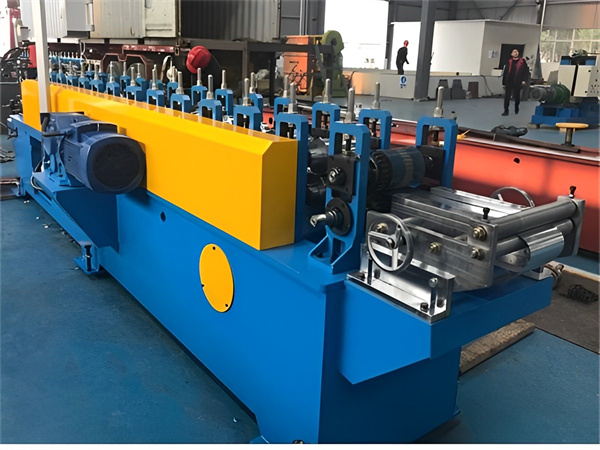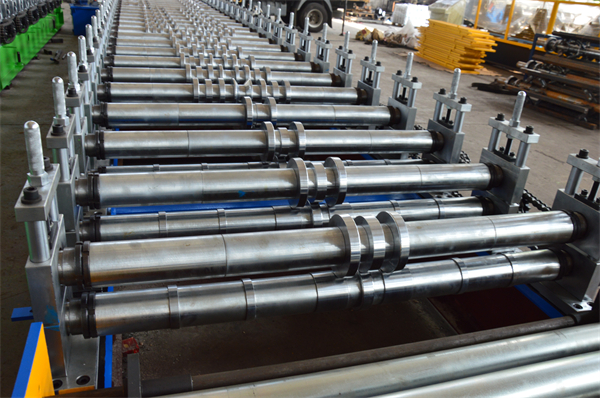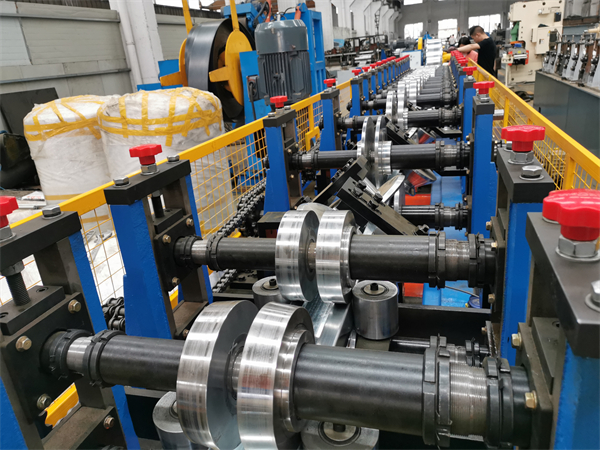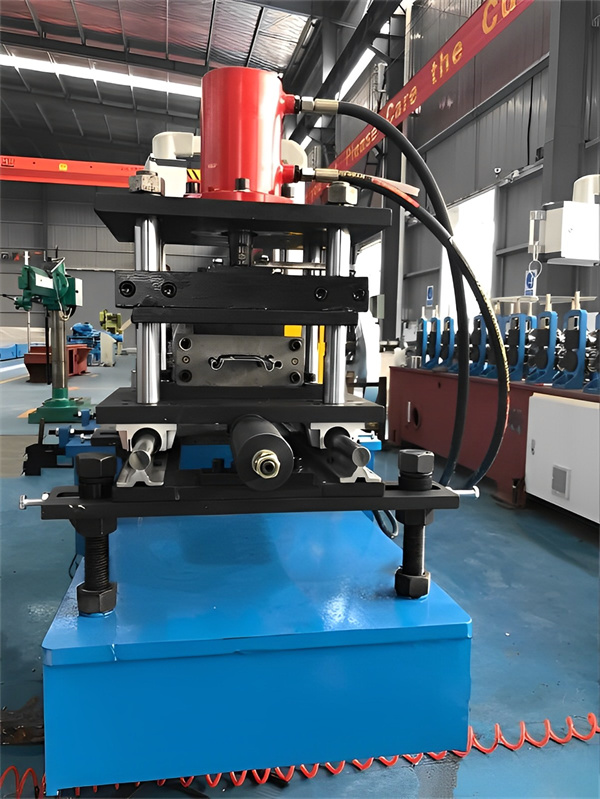1. Introduction
In the world of fencing solutions, palisade fences have earned a reputation for their robustness and effectiveness in providing security. These fences consist of vertical steel or aluminum pales attached to horizontal rails, creating a formidable barrier against unauthorized access and potential threats. To meet the increasing demand for palisade fences, the manufacturing process has evolved significantly, thanks to technological advancements. One such technological marvel is the palisade roll forming machine, which has revolutionized the way these fences are produced.
2. What is a Palisade Roll Forming Machine?
A palisade roll forming machine is an advanced piece of equipment designed to automate the production of palisade fences. It utilizes the roll forming process, where a continuous strip of metal is passed through multiple sets of rollers to gradually shape the metal into the desired profile. The machine is equipped with various stations, each responsible for a specific task in the production process, such as cutting, punching, and forming.

3. How Does a Palisade Roll Forming Machine Work?
The palisade roll forming machine operates on a straightforward yet efficient principle. First, the raw material, usually in the form of coils, is fed into the machine. The material passes through a series of rollers that gradually shape it into the desired “W” or “D” profile, typical of palisade fences. Simultaneously, the machine can perform additional tasks like punching holes for bolt-on connections or notching for easy assembly.
Once the material is formed and prepared, the machine cuts it into the required length, ready for assembly. The fully automated process ensures high precision and consistent quality, reducing manual errors and minimizing material waste.
4. Advantages of Using a Palisade Roll Forming Machine
4.1 Cost-Effective Production
Investing in a palisade roll forming machine offers significant cost advantages in the long run. While the initial setup cost might be substantial, the machine’s high production capacity and efficiency result in lower production costs per unit, making it a cost-effective solution.
4.2 High Production Speed
Traditional methods of manufacturing palisade fences can be time-consuming and labor-intensive. In contrast, roll forming machines can produce fences at a rapid pace, meeting high demand without compromising on quality.
4.3 Customization Options
A key advantage of roll forming machines is their flexibility in creating various fence profiles. Manufacturers can easily adjust the machine’s settings to produce different sizes, shapes, and designs, catering to diverse customer requirements.
4.4 Durable and Reliable Output
The precision and uniformity achieved by palisade roll forming machines ensure that each fence component is consistent and reliable. This results in sturdy and durable fences that can withstand harsh environmental conditions.
4.5 Reduced Material Waste
The roll forming process minimizes material waste by efficiently utilizing the raw material. This eco-friendly approach not only benefits the environment but also reduces production costs.
5. Applications of Palisade Fencing
Palisade fences find applications in various industries and settings due to their exceptional security features and aesthetic appeal.
5.1 Security Fencing
Palisade fences are primarily used for security purposes, providing an effective deterrent against intruders. They are commonly used to secure sensitive areas such as military facilities, power plants, and prisons.
5.2 Agricultural Fencing
In rural areas, palisade fences are often employed to protect agricultural land and livestock from unauthorized access and potential threats.
5.3 Perimeter Fencing for Commercial Properties
Many commercial properties utilize palisade fences to secure their perimeters, ensuring the safety of employees and valuable assets.
5.4 Public and Government Facilities
Public parks, government buildings, and recreational areas often employ palisade fences to enhance security and maintain controlled access.

6. Types of Palisade Roll Forming Machines
There are several types of palisade roll forming machines available in the market, each offering unique capabilities and features.
6.1 Single Profile Roll Forming Machine
A single profile roll forming machine specializes in producing a single type of palisade fence profile. It is an ideal choice for manufacturers who require high-volume production of a specific fence design.
6.2 Double Profile Roll Forming Machine
A double profile roll forming machine can produce two different palisade fence profiles without the need for extensive changeovers. This versatility allows manufacturers to cater to a broader range of customer demands.
6.3 Triple Profile Roll Forming Machine
For manufacturers seeking the utmost flexibility, a triple profile roll forming machine offers the ability to produce three different fence profiles efficiently.
7. Factors to Consider When Choosing a Palisade Roll Forming Machine
Selecting the right palisade roll forming machine is crucial to ensure efficient production and high-quality output. Consider the following factors when making your decision.
7.1 Production Capacity
Evaluate the machine’s production capacity to ensure it meets your current and future production requirements.
7.2 Material Thickness and Width
Different projects may demand various material thicknesses and widths. Ensure the machine can handle the specific materials you plan to use.
7.3 Automation and Control System
An advanced automation and control system enhances productivity and reduces the chance of errors during production.
7.4 Customization Options
Choose a machine that offers easy adjustment and customization to meet different customer needs.
8. Maintenance and Troubleshooting Tips
Proper maintenance of the palisade roll forming machine is essential to ensure its longevity and consistent performance. Follow these tips to keep your machine in optimal condition.
8.1 Regular Cleaning and Lubrication
Perform regular cleaning of the machine to remove dust, debris, and any metal shavings that may accumulate during production. Additionally, lubricate moving parts to reduce friction and prevent premature wear.
8.2 Inspection and Preventive Maintenance
Regularly inspect the machine for signs of wear, loose components, or misalignments. Address any issues promptly and perform preventive maintenance to prevent breakdowns.
8.3 Common Issues and Solutions
Familiarize yourself with common issues that may arise during machine operation, such as material jamming or misfeeding. Have a list of solutions ready to address these problems efficiently.

9. Safety Precautions for Operating a Palisade Roll Forming Machine
Safety should be a top priority when operating the palisade roll forming machine. Follow these precautions to ensure a safe working environment for operators and other personnel.
9.1 Training and Certification
Ensure that all operators are adequately trained and certified to use the machine safely. Training should include proper handling, emergency procedures, and understanding the machine’s safety features.
9.2 Proper Use of Personal Protective Equipment (PPE)
Require all operators to wear appropriate personal protective equipment, such as gloves, safety goggles, and ear protection, to minimize the risk of injury.
9.3 Machine Guards and Safety Features
Inspect and maintain all machine guards and safety features to prevent accidental contact with moving parts during operation.
9.4 Emergency Stop Procedures
Establish clear emergency stop procedures and make sure all operators are familiar with them. An easily accessible emergency stop button can prevent accidents and injuries.
10. Future Trends in Palisade Roll Forming Technology
As technology continues to advance, the palisade roll forming industry is expected to witness exciting developments.
- Automated Material Handling: Integration of robotic systems for material handling can further streamline the production process and increase efficiency.
- Advanced Control Systems: Future roll forming machines may feature sophisticated control systems that offer more customization options and real-time production monitoring.
- Eco-Friendly Materials: With a growing emphasis on sustainability, manufacturers may explore eco-friendly materials for palisade fences, influencing roll forming machine designs.

11. Conclusion
The palisade roll forming machine has transformed the fencing industry by providing a cost-effective, efficient, and reliable solution for manufacturing palisade fences. Its ability to produce high-quality fences with customization options and reduced material waste makes it a valuable asset for fencing manufacturers. However, to maximize the machine’s benefits, proper maintenance and adherence to safety protocols are crucial.
As the demand for palisade fences continues to rise, the roll forming technology is likely to evolve, incorporating automation and sustainability to meet the needs of the future. Embracing these advancements will further propel the palisade roll forming industry to new heights, offering innovative and effective fencing solutions worldwide.
12. FAQs
1. Can a palisade roll forming machine produce different fence heights?
Yes, a palisade roll forming machine can be adjusted to produce various fence heights by modifying the cutting and forming stations.
2. Is it possible to create custom designs using a roll forming machine?
Absolutely! Palisade roll forming machines offer flexibility for creating custom designs to meet specific customer requirements.
3. Are palisade fences suitable for coastal areas with high salt exposure?
Yes, palisade fences made from galvanized steel or aluminum are well-suited for coastal areas as they offer excellent corrosion resistance.
4. How often should the palisade roll forming machine be serviced?
Regular maintenance and servicing should be performed at least once every six months to ensure optimal performance and prevent breakdowns.
5. Can a palisade roll forming machine work with different types of metals?
Yes, palisade roll forming machines can process various metals, including steel, aluminum, and even stainless steel, depending on the machine’s specifications.
